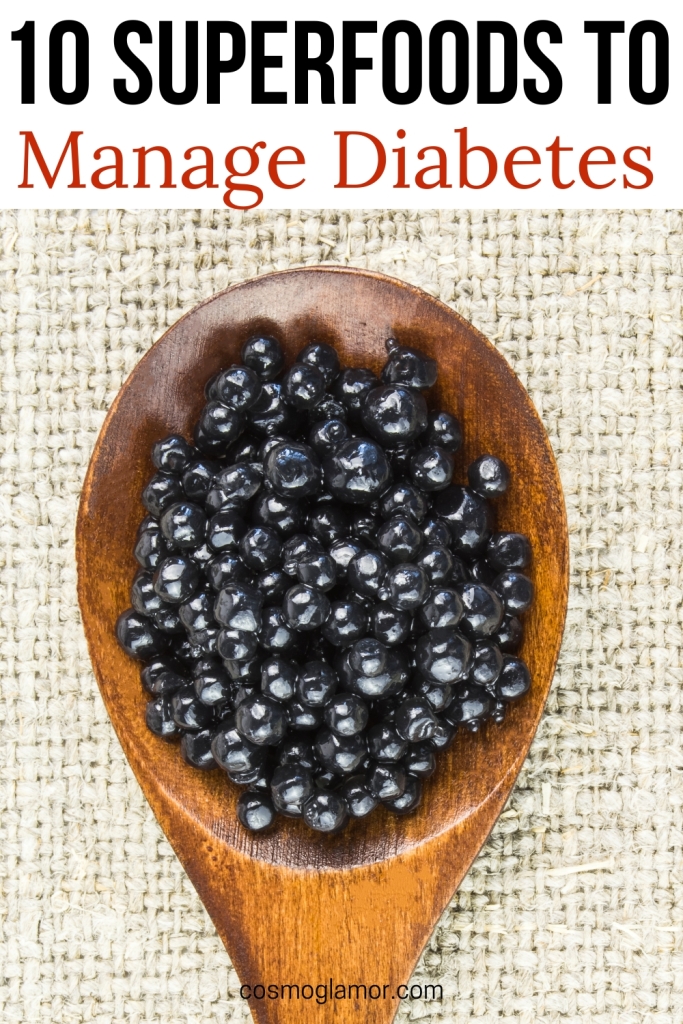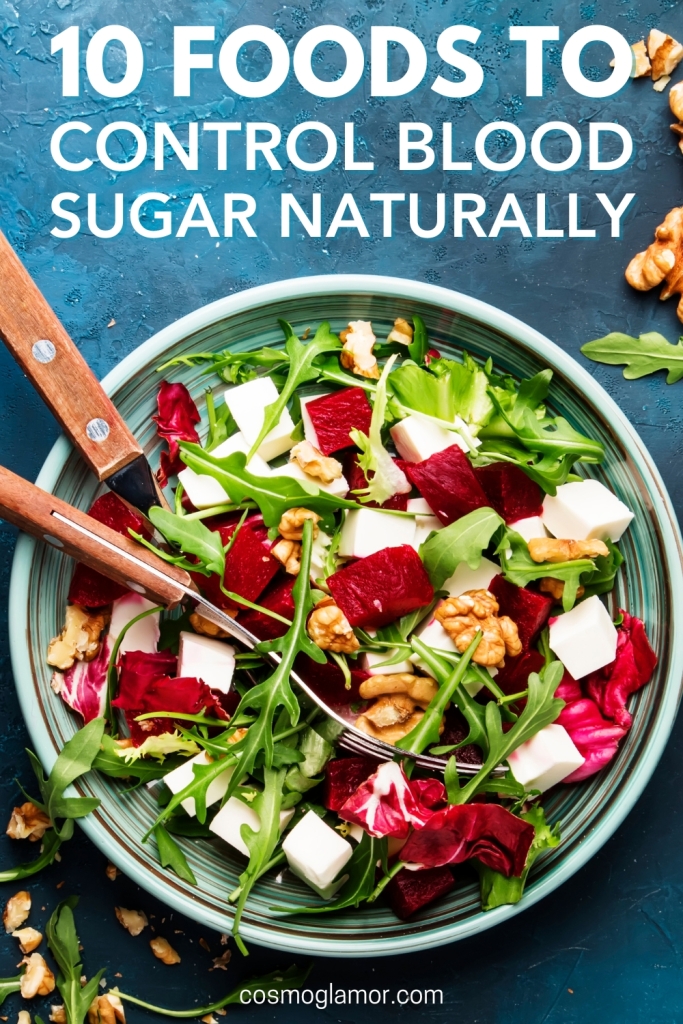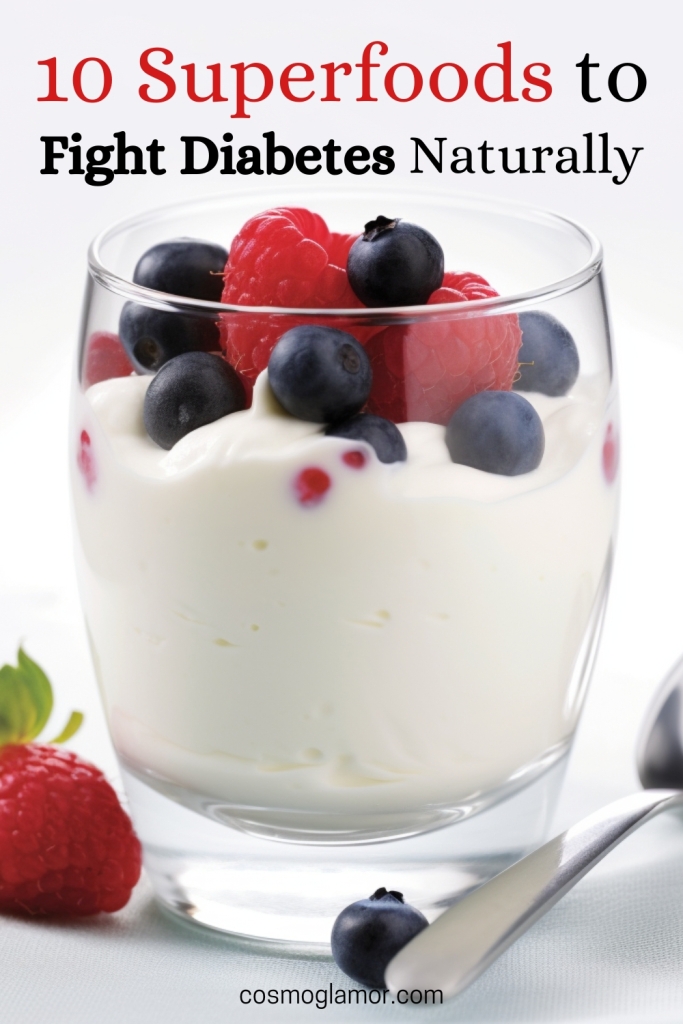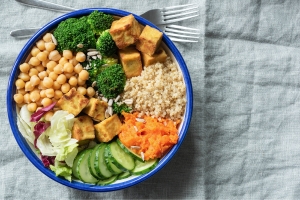My journey with diabetes has been full of unexpected twists and turns. From the initial shock of diagnosis to the daily struggles of managing blood sugar levels, it's been a rollercoaster ride. But amidst the challenges, I've discovered a secret weapon: superfoods. These nutritional powerhouses have not only helped me gain better control of my diabetes but also transformed my relationship with food. Join me as we explore the top 10 superfoods that can revolutionize your approach to diabetes management.
Unleashing the Potential of Superfoods
Superfoods are more than just a passing trend; they're nutrient-packed allies in your fight against diabetes. Bursting with antioxidants, fiber, vitamins, and minerals, these foods work synergistically to help regulate blood sugar, quell inflammation, and shield your heart. Think of them as your dietary dream team, each player with unique strengths contributing to a winning strategy.
Understanding the Diabetic Plate
Before we delve into the top 10 superfoods, let's refresh our understanding of a diabetes-friendly diet. The key objective is to maintain steady blood sugar levels. This involves keeping tabs on carbohydrate intake, prioritizing low-glycemic index (GI) foods, and ensuring a balanced intake of essential nutrients.
- Carbohydrate Control: Carbohydrates break down into glucose, directly influencing blood sugar levels. Monitoring your carb intake is like adjusting the volume knob on your blood sugar—keep it steady to avoid those jarring spikes and dips.
- Low-GI Foods: These are the “slow and steady” players in the blood sugar game. They release glucose gradually, preventing those sudden surges that can leave you feeling drained and your body out of balance.
- Nutrient Harmony: A well-rounded diet rich in fruits, vegetables, lean protein, and healthy fats is the bedrock of overall well-being. It's like providing your body with a diverse orchestra of nutrients, each playing its part in maintaining a harmonious state of health.
Top 10 Superfoods: Your Diabetes Allies
Now, let's meet the stars of our show—the top 10 superfoods that can be game-changers in your diabetes management journey.
1. Leafy Greens: Nature's Antioxidant Arsenal

Remember those childhood battles over finishing your spinach? Turns out, your parents were right! Leafy greens like spinach, kale, and collard greens are nutritional goldmines, especially for those navigating diabetes.
- Antioxidant Powerhouse: They're loaded with antioxidants, those valiant defenders that combat harmful free radicals in your body, protecting your cells from damage.
- Blood Sugar Control: Leafy greens are rich in fiber and have a low glycemic index, which means they won't send your blood sugar soaring. Studies suggest that consuming leafy greens with a meal can help slow down the rise in blood sugar after eating. This is because the fiber they contain slows down the absorption of glucose into the bloodstream.
Potential Considerations: While generally safe, some leafy greens, like spinach and kale, are high in vitamin K, which can interfere with blood thinners. If you're on blood thinners, it's advisable to discuss with your doctor how to best incorporate these greens into your diet.
How to Enjoy:
- Breakfast: Add a handful of spinach to your morning omelet or smoothie.
- Lunch: Toss some kale into your salad or wrap.
- Dinner: Sauté collard greens with garlic for a flavorful side dish, or add them to stir-fries and soups.
2. Citrus Fruits: Zest Up Your Health

Oranges, grapefruits, lemons, and limes—these vibrant citrus fruits offer more than just a refreshing burst of flavor. They're packed with nutrients that can play a supportive role in diabetes management.
- Fiber and Vitamin C: Citrus fruits are excellent sources of fiber and vitamin C. Fiber helps regulate blood sugar levels by slowing down the absorption of sugar into the bloodstream. Vitamin C, a potent antioxidant, protects your cells from damage and supports overall immune function.
- Blood Sugar Regulation: The soluble fiber in citrus fruits forms a gel-like substance in your digestive system, slowing down the absorption of sugar and helping prevent those dreaded blood sugar spikes.
Potential Considerations: Citrus fruits are acidic and may aggravate heartburn or acid reflux in some individuals. If you experience these issues, it might be best to enjoy them in moderation.
How to Enjoy:
- Snacks: Enjoy a whole orange or grapefruit as a refreshing snack.
- Breakfast: Add grapefruit segments to your yogurt parfait.
- Dinner: Squeeze some lemon or lime juice over your grilled fish or chicken for a zesty flavor boost.
3. Fatty Fish: Omega-3s for a Healthy Heart

Salmon, mackerel, tuna, and sardines—these fatty fish are your heart's best friends, thanks to their abundant omega-3 fatty acid content.
- Omega-3 Power: Omega-3 fatty acids are renowned for their anti-inflammatory properties. They help reduce the risk of heart disease, a common complication of diabetes. They also contribute to improved triglyceride levels and may help lower blood pressure.
- Blood Sugar Control: Some studies suggest that omega-3s may enhance insulin sensitivity, helping your body utilize insulin more effectively. This can lead to better blood sugar regulation.
Potential Considerations: Some fatty fish may contain mercury, a heavy metal that can be harmful in high amounts. Choose fish lower in mercury, such as salmon and sardines, and consume them in moderation (around two servings per week).
How to Enjoy:
- Dinner: Grill a salmon fillet with lemon and herbs, bake mackerel with a sprinkle of paprika, or enjoy tuna steaks seared with a sesame crust.
- Lunch: Add canned tuna or sardines to your salads for a protein and omega-3 boost.
4. Berries: Small Fruits, Big Impact

Berries—strawberries, blueberries, raspberries, and blackberries—are not only delicious but also bursting with nutrients that can benefit people with diabetes.
- Antioxidant Powerhouse: Berries are packed with antioxidants, including anthocyanins, which give them their vibrant colors. These antioxidants protect your cells from damage and may help reduce inflammation.
- Blood Sugar and Cholesterol Control: Studies have linked berry consumption to improved blood sugar, cholesterol, and blood pressure levels. The fiber in berries helps slow down the absorption of sugar into the bloodstream, while their antioxidants may improve insulin sensitivity.
Potential Considerations: While berries are generally well-tolerated, some people may experience mild digestive upset if they consume large quantities. Start with small portions and gradually increase your intake.
How to Enjoy:
- Breakfast: Add a handful of mixed berries to your morning cereal, oatmeal, or yogurt.
- Snacks: Enjoy a cup of berries as a refreshing and low-calorie snack.
- Desserts: Make a healthy parfait with layers of berries, plain Greek yogurt, and a drizzle of honey.
5. Nuts and Seeds: Crunchy, Nutrient-Dense Powerhouses

Almonds, walnuts, flaxseeds, and chia seeds—these crunchy delights are packed with healthy fats, fiber, and protein, making them a valuable addition to a diabetic diet.
- Healthy Fats and Fiber: The healthy fats (monounsaturated and polyunsaturated) in nuts and seeds help slow down the absorption of sugar into the bloodstream, preventing those unwelcome blood sugar spikes. The fiber also contributes to this effect and promotes feelings of fullness.
- Heart Health: Nuts and seeds are beneficial for heart health due to their high content of unsaturated fats, which can help lower bad cholesterol levels. They also provide magnesium, which is important for heart function.
Potential Considerations: Nuts and seeds are calorie-dense, so it's important to enjoy them in moderation. A small handful (about 1/4 cup) is a good serving size.
How to Enjoy:
- Snacks: Keep a small container of mixed nuts at your desk for a healthy snack.
- Breakfast: Sprinkle ground flaxseeds or chia seeds on your yogurt or oatmeal.
- Salads: Add chopped walnuts or almonds to your salads for extra crunch and nutrients.
6. Whole Grains: Fiber-Rich Foundations

Oats, quinoa, brown rice, and whole-wheat bread—these whole grains are excellent sources of fiber, a crucial component of a blood sugar-friendly diet.
- Fiber Power: Fiber is like a sponge in your digestive system, soaking up water and slowing down the digestion of carbohydrates. This prevents rapid spikes in blood sugar levels and helps you feel fuller for longer.
- Nutrient-Rich: Whole grains are packed with essential vitamins and minerals, including B vitamins, magnesium, and iron, which support overall health and energy levels.
Potential Considerations: Some individuals with celiac disease or gluten sensitivity may need to avoid certain whole grains containing gluten, such as wheat. Look for gluten-free options like quinoa, brown rice, and oats (certified gluten-free).
How to Enjoy:
- Breakfast: Start your day with a warm bowl of oatmeal topped with berries and nuts.
- Lunch: Enjoy a quinoa salad with grilled vegetables and a lemon vinaigrette.
- Dinner: Serve brown rice as a side dish with your favorite protein and vegetables.
7. Beans and Legumes: Plant-Based Powerhouses

Lentils, chickpeas, kidney beans, and black beans—these legumes are not only excellent sources of plant-based protein but also packed with fiber and essential nutrients.
- Protein and Fiber Duo: The combination of protein and fiber in beans helps stabilize blood sugar levels. Protein slows down digestion, while fiber prevents rapid sugar absorption. Together, they keep you feeling full and satisfied.
- Heart Health: Beans are beneficial for heart health due to their high fiber and low saturated fat content. They can help lower cholesterol levels and blood pressure.
Potential Considerations: Some people may experience gas or bloating after consuming beans. To minimize this, start with small portions and gradually increase your intake. Soaking beans before cooking can also help improve digestibility.
How to Enjoy:
- Soups and Stews: Add lentils or beans to your favorite soups and stews for extra protein and fiber.
- Salads: Toss chickpeas or black beans into your salads for a hearty and nutritious meal.
- Dips: Make a delicious hummus dip with chickpeas, tahini, lemon juice, and garlic.
8. Yogurt: Probiotic Boost for Gut Health

Yogurt, especially plain, unsweetened Greek yogurt, is a valuable addition to a diabetic diet due to its probiotic content and high protein levels.
- Probiotics: Probiotics are beneficial bacteria that support a healthy gut microbiome. A balanced gut microbiome is linked to improved blood sugar control and reduced inflammation.
- Protein: The high protein content in Greek yogurt helps stabilize blood sugar levels and keeps you feeling full and satisfied.
Potential Considerations: Some flavored yogurts can be high in added sugars. Choose plain, unsweetened yogurt and add your own flavor with fresh fruit, nuts, and a drizzle of honey.
How to Enjoy:
- Breakfast: Enjoy a bowl of Greek yogurt with berries, nuts, and a sprinkle of cinnamon.
- Snacks: Pack a single-serving container of yogurt for a quick and healthy snack.
- Smoothies: Add Greek yogurt to your smoothies for extra creaminess and protein.
9. Avocados: Creamy, Healthy Fat Wonders

Avocados, often mistaken for vegetables, are actually fruits—and incredibly healthy ones at that! They're rich in monounsaturated fats, which are beneficial for heart health and blood sugar control.
- Healthy Fats: Monounsaturated fats help improve insulin sensitivity, making your body more responsive to insulin. This can lead to better blood sugar regulation.
- Fiber and Nutrients: Avocados are also good sources of fiber, which helps slow down sugar absorption. They also provide potassium, which is important for blood pressure control, and vitamin K, essential for bone health.
Potential Considerations: Avocados are relatively high in calories, so it's important to enjoy them in moderation as part of a balanced diet.
How to Enjoy:
- Salads: Add avocado slices to your salads for a creamy texture and healthy fats.
- Toast: Spread mashed avocado on whole-wheat toast for a satisfying breakfast or snack.
- Smoothies: Blend avocado into your smoothies for a creamy texture and a boost of nutrients.
- Guacamole: Make a healthy guacamole with mashed avocado, lime juice, onions, and cilantro.
10. Dark Chocolate: A Guilt-Free Indulgence (in Moderation!)

Yes, you read that right! Dark chocolate, with at least 70% cocoa content, can be part of a healthy diabetic diet when enjoyed in moderation.
- Antioxidants: Dark chocolate is rich in flavonoids, a type of antioxidant that may help improve insulin sensitivity and reduce the risk of heart disease. Flavonoids may also help protect blood vessels and improve blood flow.
- Moderation is Key: While dark chocolate offers benefits, it still contains calories and sugar. A small square (about 1 ounce) a few times a week is a reasonable amount.
Potential Considerations: Some dark chocolate may contain added sugars or milk fats. Look for dark chocolate with a high cocoa content (70% or higher) and minimal added ingredients.
How to Enjoy:
- After Dinner: Savor a small square of dark chocolate as a treat after dinner.
- Trail Mix: Add dark chocolate chips to your trail mix for a touch of sweetness and antioxidants.
- Smoothies: Add a small amount of dark chocolate to your smoothies for a richer flavor.
Beyond the Top 10: Expanding Your Superfood Horizons

While our top 10 list highlights some of the most potent superfoods for diabetics, the world of healthy eating is vast and exciting. Here are a few more noteworthy mentions:
- Broccoli: This cruciferous vegetable is packed with fiber, vitamin C, and sulforaphane, a compound that may help protect against cell damage.
- Garlic: Known for its pungent flavor, garlic has been linked to improved blood sugar control and reduced cholesterol levels.
- Turmeric: This golden spice contains curcumin, a powerful anti-inflammatory compound that may help improve insulin sensitivity.
Incorporating Superfoods into Your Daily Routine
Now that you're familiar with these superfoods, it's time to seamlessly integrate them into your diet. Here are some tips to get you started:
- Start Gradually: Don't feel overwhelmed. Begin by incorporating one or two new superfoods each week.
- Embrace Culinary Creativity: Explore different ways to prepare these superfoods to keep your meals exciting.
- Make Gradual Swaps: Replace unhealthy ingredients in your favorite recipes with superfood alternatives.
- Listen to Your Body: Pay attention to how your body responds to different foods and adjust your diet accordingly.
Remember that managing diabetes is an ongoing journey, not a destination. By embracing these superfoods and making mindful choices, you can take control of your health and live a vibrant, fulfilling life.
References
- Effect of Spinach, a High Dietary Nitrate Source, on Arterial Stiffness and Related Hemodynamic Measures in Older Adults: A Randomized Controlled Trial
- The Effect of Green Leafy Vegetables on Blood Glucose Control in Patients with Type 2 Diabetes: A Systematic Review and Meta-Analysis
- Citrus fruit intake and incident type 2 diabetes mellitus: a systematic review and meta-analysis of prospective cohort studies
- The effect of orange juice consumption on glucose control, lipid profile, and antioxidant status in patients with type 2 diabetes mellitus: a randomized controlled trial
- The effects of omega-3 fatty acids on glucose control and cardiovascular risk factors in type 2 diabetes mellitus: a meta-analysis of randomized controlled trials
- Berry Fruit Consumption and Metabolic Syndrome: A systematic review and meta-analysis
- Effect of blueberry consumption on metabolic syndrome, insulin resistance, and inflammation in overweight/obese adults with features of metabolic syndrome
- Effects of nuts on glycemic control in diabetes mellitus: a systematic review and meta-analysis of randomized controlled trials
- The effect of flaxseed supplementation on blood glucose and insulin resistance: a systematic review and meta-analysis of 45 randomized placebo-controlled trials
- Whole grain consumption and risk of type 2 diabetes: a systematic review and meta-analysis of cohort studies
- Effect of dietary pulses on glycemic control: a systematic review and meta-analysis of randomized controlled trials
- The effect of yogurt on glucose metabolism and insulin resistance in type 2 diabetes mellitus: a systematic review and meta-analysis of randomized controlled trials
- Avocado Consumption and Risk Factors for Metabolic Syndrome: A Systematic Review and Meta-Analysis
- Dark chocolate and cocoa consumption in relation to cardiovascular health: a systematic review and meta-analysis









12 Responses
This is a great article! I was recently diagnosed with type 2 diabetes, and I’m trying to overhaul my diet. I love the idea of “superfoods” – it makes healthy eating sound more exciting! But I have to ask about the leafy greens. You say they’re an “antioxidant arsenal.” Are we talking Popeye-level strength here? Also, do I have to eat kale? I’ve tried it, and let’s just say it wasn’t love at first bite. Are there any other greens that are just as good?
Mary, welcome to the world of diabetes management! It’s great that you’re embracing the power of superfoods. While these greens won’t give you Popeye’s biceps (unfortunately!), they are packed with antioxidants that help protect your body. And no, you don’t have to eat kale! Spinach, collard greens, and even romaine lettuce are all fantastic options. The key is to find greens you enjoy and can incorporate regularly. Experiment with different types and preparations – you might be surprised at what you like! Also, adding them to smoothies can hide the taste, I just put a handful, and I don’t even notice the taste.
Okay, I’m all for healthy eating, but dark chocolate is a superfood? You’re pulling my leg, right? I mean, I’m not complaining, but it seems too good to be true! Also, you mentioned that some of these foods are high in calories, like nuts and avocados. If I’m trying to manage my weight, how do I make sure I’m not overdoing it with these “healthy” fats? Any tips on portion control that don’t involve carrying around a food scale everywhere I go?
Sarah, you caught me! While dark chocolate is delicious, it’s more of a “treat” than a primary superfood, make sure it is at least 70% cocoa content. But yes, in moderation, it does offer some antioxidant benefits. As for the calorie-dense foods, portion control is key. For nuts, a good rule of thumb is a small handful – about what fits in the palm of your hand. For avocados, aim for about 1/4 to 1/2 of a medium fruit. You don’t need a food scale – just be mindful of your portions and listen to your body’s hunger cues. These healthy fats are beneficial, but they’re still fats, so moderation is the magic word!
Okay, I’m intrigued by this “Low-Carb Eggplant Lasagna.” I’m always looking for ways to cut back on carbs, but lasagna is my ultimate comfort food! Does it really taste like the real deal? And is it a pain to make? I’m not exactly a whiz in the kitchen. Also, my husband is a picky eater; any suggestions for sneaking in more veggies without him noticing? 😉
Hey Aurora ! I totally get it – lasagna is a classic for a reason! This eggplant version really does hit the spot. The eggplant gets nice and tender, and with a flavorful meat sauce and plenty of cheese, you won’t even miss the pasta.
As for being a “pain to make,” it’s honestly not too bad. The hardest part is slicing the eggplant, but if you have a mandoline, that’s a breeze! If not, just take your time with a sharp knife.
For your picky husband… ah, the age-old dilemma! My trick is to finely chop or even puree some extra veggies (like zucchini, carrots, or even spinach) and mix them right into the meat sauce. They practically disappear, and he’ll be getting a hidden dose of nutrients! You can also try adding some finely chopped mushrooms to the sauce. They have a “meaty” texture that might blend in well. Let me know how it goes!
These are some great ideas, but I’m always on the go. I barely have time to sit down, let alone cook! Any tips for making these lunches even faster? Also, the “Salad in a Jar” sounds cute, but does it actually stay fresh all week? I’m skeptical! Won’t everything get all wilted and sad by Friday?
Savannah, I hear you! Life gets crazy busy. The good news is that many of these recipes can be prepped ahead or simplified. For the “Low-Carb Burrito Bowls,” you can buy pre-cooked chicken or use leftovers. And for the “Cauli Shrimp Fried Rice,” you can use pre-riced cauliflower and frozen shrimp to save time.
As for the “Salad in a Jar,” the key is the layering! If you put the dressing at the bottom, followed by hardy veggies (like carrots and peppers), then your protein, and finally the leafy greens at the very top, it’ll stay surprisingly fresh for several days. Just make sure the jar is airtight. You can also prep a few on Sunday and grab them throughout the week. Think of it as your own personal salad bar. Give it a try, and let me know if you become a convert to the jar salad life! It’s more fun and fresh than you think!
Wow, this is a lot to take in! I’ve been trying to eat healthier since my diagnosis, but sometimes it feels like I need a PhD in nutrition just to figure out what’s good for me. I love the idea of “superfoods,” but are they really that super? I mean, kale is great and all, but can it really replace my diabetes meds? Also, dark chocolate is a superfood? I think my husband will be thrilled about that one, lol! 😂 I guess I’ll have to hide the chocolate from him now! Also, the resources section is very helpful. I am very thankful for that.
You’re right, Aiyana, it can definitely feel overwhelming! Think of superfoods as your allies, not necessarily replacements for medication. They work with your treatment plan to help you manage things better. And yes, dark chocolate (the high cocoa kind) has antioxidants that can be beneficial. Just tell your husband it’s “medicinal” chocolate. 😉 Glad you found the resources helpful!
Okay, I’m intrigued, especially about the avocado part. I thought they were full of fat and I’d have to avoid them. But “healthy fats”? What’s the deal with that? And while I like berries, can I just eat a whole tub of them? Also, is it ok to eat chocolate every day? I need specifics, people! I want a six-pack, but I’m not giving up chocolate. Help! 🤣
Dyani, you’re asking the right questions! Yes, avocados have fat, but it’s the good kind (monounsaturated) that can actually help with insulin sensitivity. As for berries, moderation is key. A serving is about a cup. And while dark chocolate is good for you, it is not good to eat a lot every day. Enjoy it a few times a week. You can still have your six-pack and enjoy some chocolate once in a while – balance is everything!